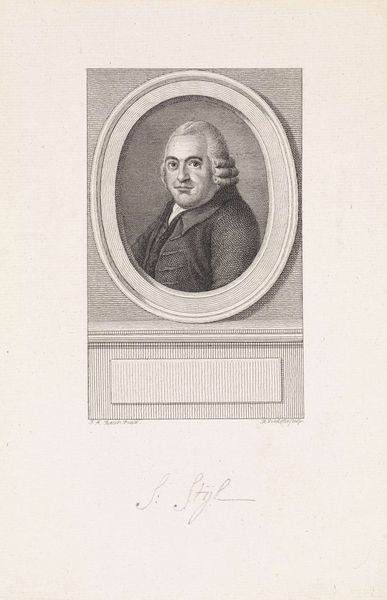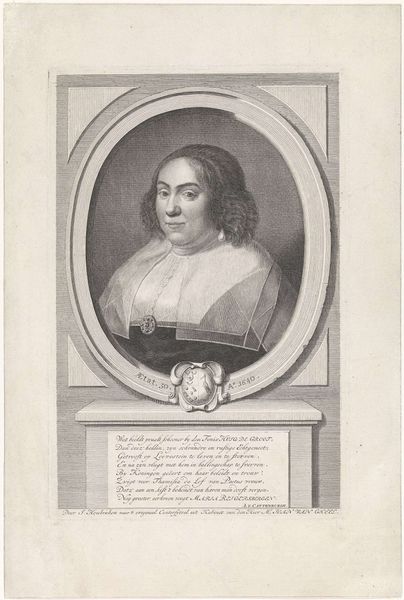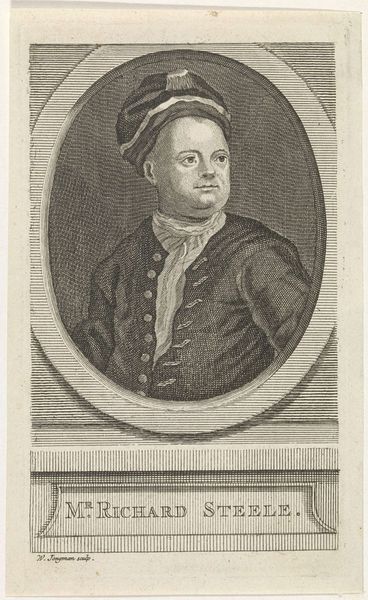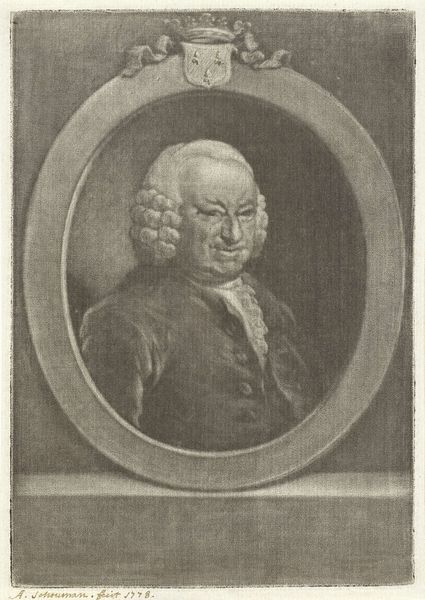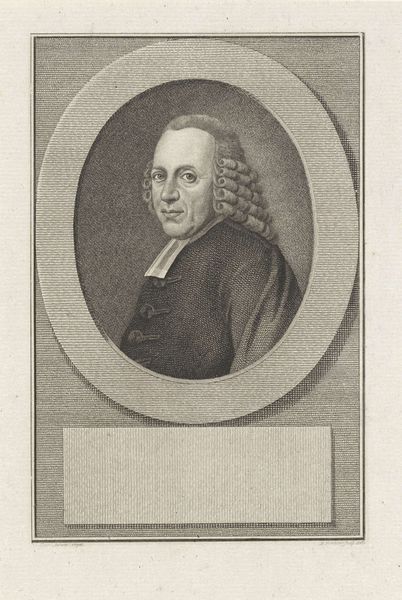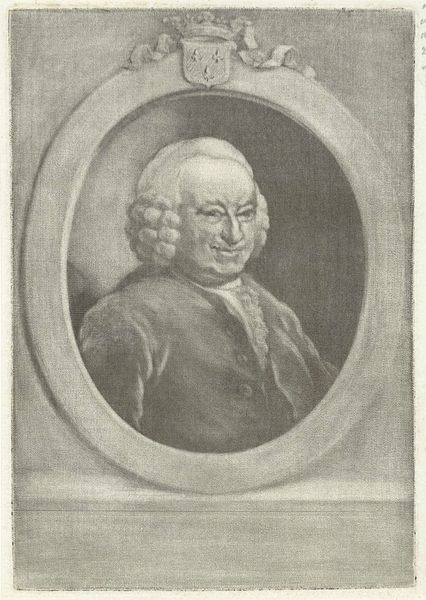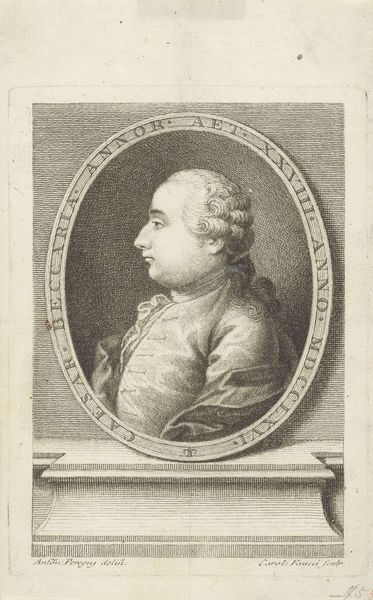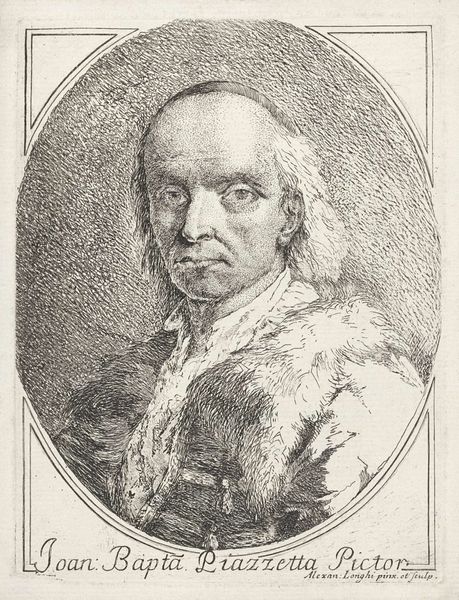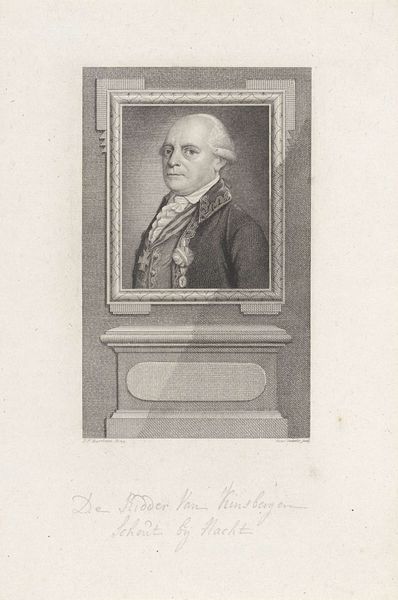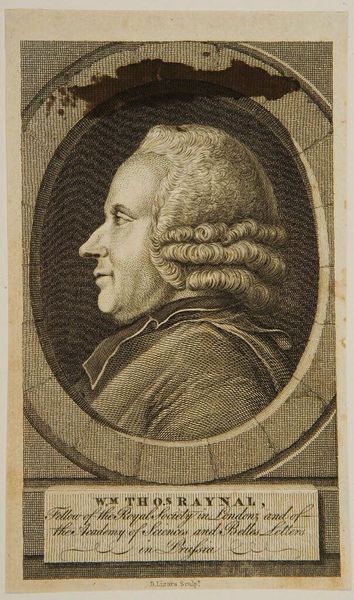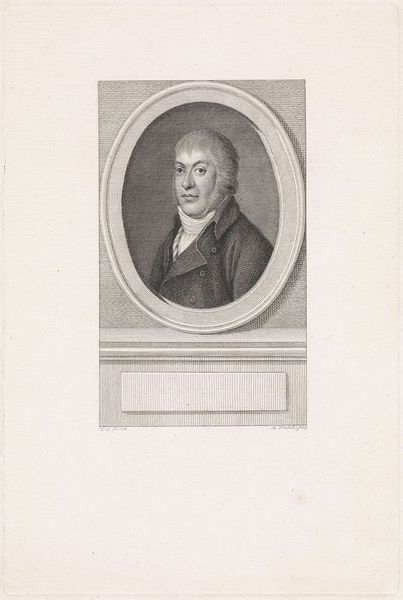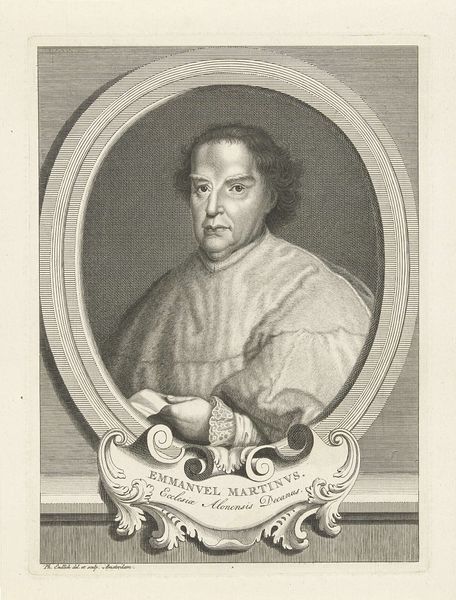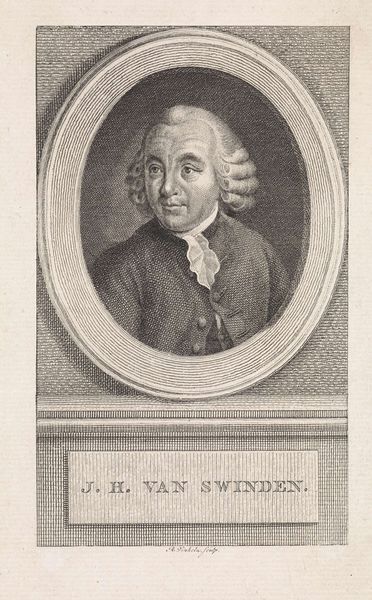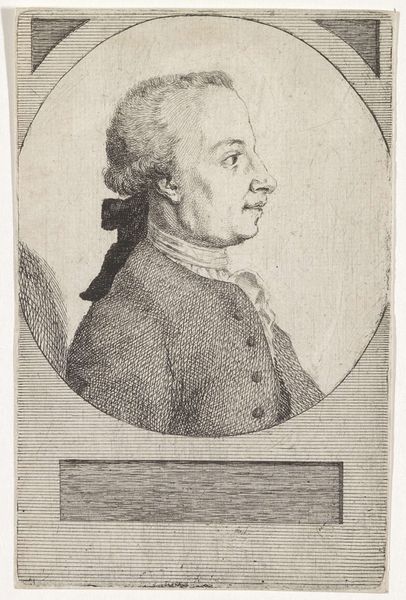
Dimensions: height 235 mm, width 156 mm
Copyright: Rijks Museum: Open Domain
Curator: It’s a striking portrait isn't it? The crisp lines and monochrome tones create a strong impression. Editor: It is indeed quite formal and proper, almost austere, the figure's expression serious and reserved. It feels like a statement of authority. Tell me more about the piece itself. Curator: Certainly. This is an engraving dating from 1793 entitled “Portret van Wilhelm Leendert Krieger” and was created by Reinier Vinkeles. The medium involves a combination of engraving with graphite and pencil. Editor: Looking closely, I'm immediately drawn to the materiality of the print. Think about the artist’s labor; the intentional carving into the metal plate. It would have been a highly skilled practice! The production is meticulous; observe how Vinkeles employs hatching and cross-hatching to build up tone and form. What was the context? Was this a common means of portraiture at the time? Curator: Absolutely. Printmaking, particularly engraving, allowed for wider dissemination of imagery, serving as a tool for constructing and reinforcing social hierarchies and remembering powerful figures within society. Think of it as the pre-photography equivalent of our digital age. Editor: So the availability and relative affordability of prints contributed to shifting power dynamics in art patronage and reception? Who was Wilhelm Krieger anyway? Did his status affect the work? Curator: He was, as records suggest, a minister and professor of theology in Leiden. So, this print would have certainly circulated among his colleagues, students, and the broader educated public, bolstering his image and authority, I assume. It reinforces societal structures. The choice of a formal portrait, encased in an oval frame and classical base, speaks to established traditions of memorializing public figures. Editor: I wonder about Vinkeles. Did he typically depict elites? Was he intentionally adopting artistic traditions that enhanced his patrons' reputations or expressing a vision for how power ought to be represented at that moment? What workshops might he have used and been affiliated with? Curator: Those are vital questions, as we consider not only who is represented but who is doing the representing. Understanding the artistic networks that Vinkeles navigated provides critical insight. This exploration reveals both the possibilities and constraints facing artists working within institutional and social systems. Editor: Well, this was helpful. I find it more compelling thinking of it as both an artistic accomplishment and as a historical marker—the labor, choices and context all contribute to its significance. Curator: I agree. Appreciating the production and the period gives us more nuance to appreciate its cultural implications.
Comments
No comments
Be the first to comment and join the conversation on the ultimate creative platform.
